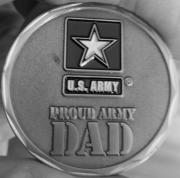
Originally Posted by
GJM

I searched for this information in the Forum, but failing to see this question answered, decided to start a new thread. If my search was faulty, feel free to nuke this thread.
I am aware of the various ways of speed reloading a pistol from slide lock -- using an overhand method to manipulate the slide, using a sling shot method to manipulate the slide, using either the strong or support hand to manipulate the slide lock, or inserting the magazine so as to cause the slide to go forward without manipulating the slide lock.
This was a busy training year, and as I got ready for a Rogers class with a P30, I noted that most every vigorous insertion of a magazine caused the slide to go forward without touching the slide stop. Bill Rogers discussed this, including the caveat to know how your weapon ran, and if you used the vigorous insertion method, and the slide didn't go forward, to be able to quickly solve the problem. Over time, I realized that by vigorously inserting the magazine with pressure on the rear of the magazine, I could make the slide on my P30 or M&P pistols go forward over 95% of the time. While there have been instances where the slide didn't go forward at insertion, never once this year, on any year, have I induced a stoppage inserting the magazine vigorously. As I shoot mostly HK and M&P pistols, I have trained to insert the magazine vigorously and follow up with my support thumb on the slide stop if necessary.
On another forum, someone made the comment that allowing the slide to go forward at insertion of the magazine was poor technique as it was likely to lead to stoppages -- in their experience 10 per cent of the time. I was amazed as I haven't had one ever, and with between 15 and 20,000 rounds down range so far this year thru HK, M&P and Glock pistols, I have done a lot of reloads.
I am curious whether others are using the technique of vigorously inserting the magazine so as to cause the slide to go forward, and whether they are seeing stoppages with this technique?




 Reply With Quote
Reply With Quote




